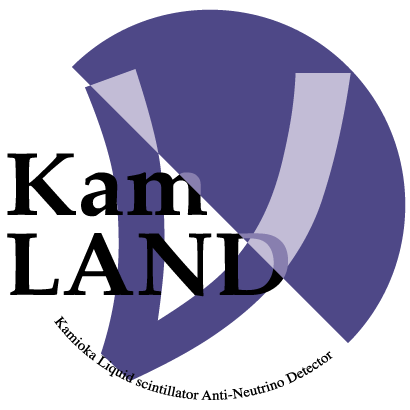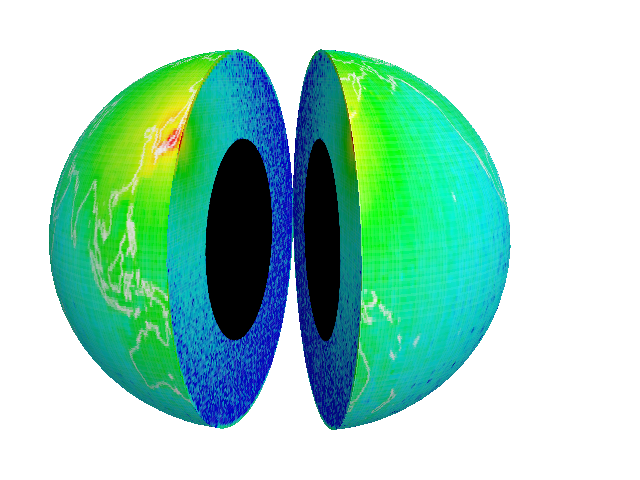|
"Geoneutrinos" are electron antineutrinos produced by beta-decays of the nuclei in the decay chains of 238U and 232Th.
KamLAND is the first detector to conduct an investigation on geoneutrinos.
Geophysics
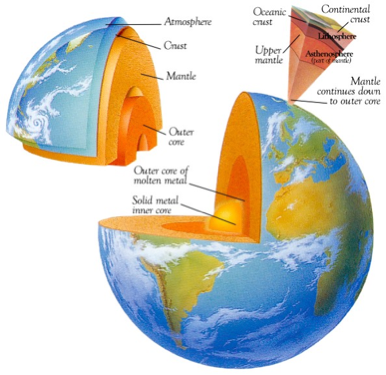
This image is taken from here.
|
The Earth can be split into 5 basic regions according to the seismic data: core, mantle, oceanic crust, continental crust, and sediment.
All these regions are solid except for the outer core. Even though the mantle is solid, it convects.
The mantle convection is responsible for the terrestrial phenomena such as plate tectonics and earthquakes.
The oceanic crust is renewed at mid-ocean ridges and recycled back into the mantle at subduction zones.
So, the typical oceanic crust (~80 million years old) is much younger than the continental crust (~2 billion years old).
|
Heat Flow Measurement from the Earth
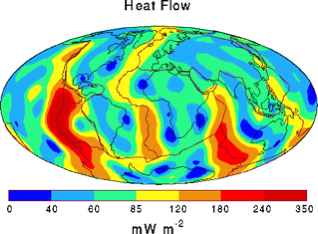
This image is taken from here.
|
The Earth's conductive heat flow has been evaluated to be 44.2TW,
or 31TW (with an assumption of lower hydrothermal heat flow near mid-ocean ridges).
These evaluations use borehole temperature gradient and conductivity measurements.
These borehole measurements are concentrated in the US, Europe, and Japan. The deepest borehole is ~12km, 1/500 of the Earth's radius.
|
Radiogenic Heat in the Earth
|
The radioactive isotopes inside the Earth generate heat.
In particular, decays of the daughter nuclei in the decay chains of 238U and 232Th, and 40K
generate most of the radiogenic heat produced.
According to the estimated concentrations of these isotopes described below, the radiogenic heat production rates are
8.0, 8.3, and 3TW for 238U series, 232Th series, and 40K decays, respectively.
The sum of the estimated radiogenic heat production rate,
~19TW is only about the half of the total heat flow measured using the borehole measurements.
According to some of the mantle convection models, these two numbers, 44TW (or 31TW) for the total heat dissipation rate from the Earth,
and 19TW for radiogenic heat production rate should be similar.
As these radioactive isotopes beta-decay, they produce antineutrinos.
So, measuring these antineutrinos may serve as a crosscheck of the radiogenic heat production-rate.
|
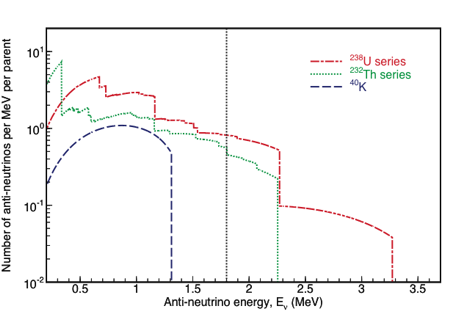 |
Reference Earth Model
According to the measurements of the concentrations of U and Th in the chondritic meteorites,
the concentration mass ratio of Th to U inside the Earth is believed to be ~3.9.
The core of the Earth, high density alloy of Fe and Ni,
is believed to be highly incompatible with isotopes with high atomic weight such as U and Th.
Therefore we assume that U and Th are absent from the core.
As the Earth formed, mantle crystallized outward from core-mantle boundary.
U and Th prefer to enter a melt phase, so we assume the continental crust and continental sediment have the highest U and Th concentrations.
|
|
